Do you love creepy old buildings? Have you ever wanted to explore a ghost town? You could be looking for the scare factor or you could simply have a passion for history. In either case, you might enjoy visiting some of the interesting abandoned places in the world.
Picture yourself standing in the halls of an abandoned hospital. A cool breeze rushes past with moans that make you wonder if it’s haunted. Imagine driving along a quiet back road and suddenly coming across a town. Once bustling, it now crumbles like the dreams of the workers long since gone. Picture the remnants of a centuries-old castle — that Mother Nature herself is now reclaiming.
What the abandoned places in the world can offer you is a sense of beauty. Or sadness. Or a chill that runs up your spine. Because although these places might be deserted, they are far from dead. They live on in our memories and our imagination.
You might not be fortunate enough to have interesting abandoned places near you to explore. In this case, check out the list below. On it, you’ll discover some of the world’s most impressive abandoned places.
But don’t leave it at that. There might still be more hidden right in your own backyard. Feel free to tell us about your favorite abandoned places in the comments.
Why People Abandon Places
When I started on this post, I was thinking that there are not that many abandoned places in the world, at least not at the size of cities. Of course, I knew there are many villages, farms and just lonely houses all around the world. But when thousands of people leave, leaving a whole city dead — that’s a real tragedy.
There are mainly two reasons why people suddenly – or little by little – leave a place. They can arise even if they lived there for years or even generations. First, there are environmental dangers. Second, there are economic factors. Both together explain why you can find the biggest number of abandoned villages and farms in two particular places. These are the Unites States and the countries of the former USSR.
The Appeal of the World’s Abandoned Places
Visiting abandoned places is getting more and more popular these days. Consequently, many tourist agencies offer dedicated tours. On these special interest tours, people can meet the ghost cities and villages face to face. I myself have never been on any of these and, frankly speaking, I don’t want to. I think we should leave the ghosts in peace. This goes especially for places like Pripyat where horrible tragedy took place.
Still, hobbies and tastes differ, and that’s fine. Surfing online, we can find photographer’s websites and galleries fully devoted to abandoned places. The aptly-titled Abandoned Places – itself a design experiment – or Troy Paiva’s Lost America photo stream are just two good examples. What just adds to the flavor is that these online spaces themselves may become abandoned and erode away, fragile relics of a bygone internet. It’s unavoidable when you keep on updating a post like this over the years.
The world’s famous abandoned places can look charming or they can look frightening. In the selection below, we tried to present both these aspects. The abandoned cities of the former USSR look eerily like clones, for instance. And they resemble the concentration camps of World War II. Other locations have great natural beauty.
In any case, that’s the history we should know about, so let’s get started.
Gunkanjima, Japan
Hashima Island, also called Gunkanjima (meaning “Battleship Island”), is one of 505 uninhabited islands in the Nagasaki Prefecture. It’s located about 15 kilometers from the city of Nagasaki itself. Between 1887 and 1974, the island was used as a coal mining facility, and people lived there.
Mitsubishi bought the island in 1890 for a mining project. The aim of that project was to retrieve coal from the bottom of the sea. They built Japan’s first large concrete building in 1916, a block of apartments. This was housing for their burgeoning ranks of workers. The massive apartment blocks had a second function: to protect against typhoon destruction.
An unsavory detail is that many of those laborers were forcibly recruited from other parts of Asia – Japan’s refusal to clearly acknowledge this held back the island’s World Heritage status for decades, and is even now controversial.
As petroleum replaced coal in Japan in the 1960s, coal mines began shutting down all over the country. Hashima’s mines were no exception to this trend. Mitsubishi officially announced the closing of the mine in 1974. Today it is empty and bare, earning it the name of Ghost Island. Travel to Hashima became possible again in 2009, following more than 20 years of closure.

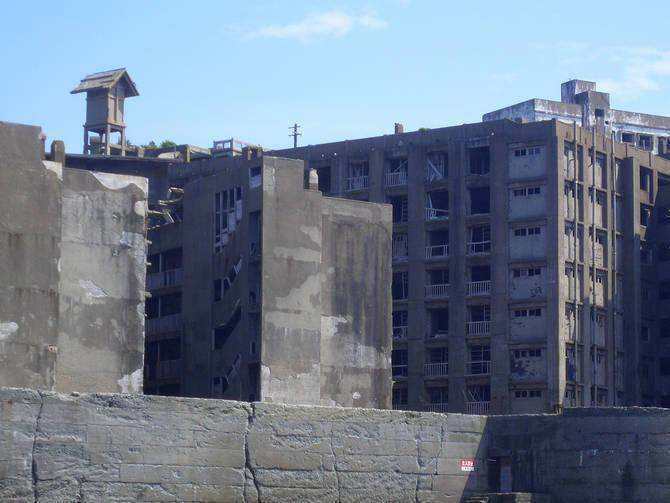



Pripyat, Ukraine
Pripyat is an abandoned city in the so-called Exclusion Zone in northern Ukraine. The former town is one of the most famous abandoned places in the world. The city started out in 1970 to offer nearby housing for the Chernobyl Nuclear Power Plant workers. That location was also its death sentence. In 1986, just before the Chernobyl disaster, its population had been around 50,000. After that nuclear accident, Pripyat evacuated all its inhabitants within just two days.
Guards and police now keep an eye on the city and the Exclusion Zone. Still, there is a measure of tourism. Obtaining the necessary documents to enter the zone is not particularly difficult. Visitors, however, will need a guide to accompany them. This is to ensure they don’t vandalize or take souvenirs from the zone.
The doors of most of the buildings are open to reduce the risk to visitors. Tourists can visit almost all of them, though only with a guide.
The city of Chernobyl, located a few miles from Pripyat, offers some accommodation. These include a hotel, many apartment buildings, and a local lodge. Some of these serve as a permanent residence for the watch crew. Other accommodations are open to outside visitors.








Kadykchan, Russia
Kadykchan is a ghost town in Russia. Construction on it began during the World War II. It housed workers of the coal mines and their families. After the collapse of the Soviet Union, mining became increasingly unprofitable. The final blow came in 1996, when six men died as a result of explosion in one of the coal mine. Because of the continuing danger, the mines closed down. The town’s 12,000 inhabitants were evacuated to other places, leaving the town empty and silent.
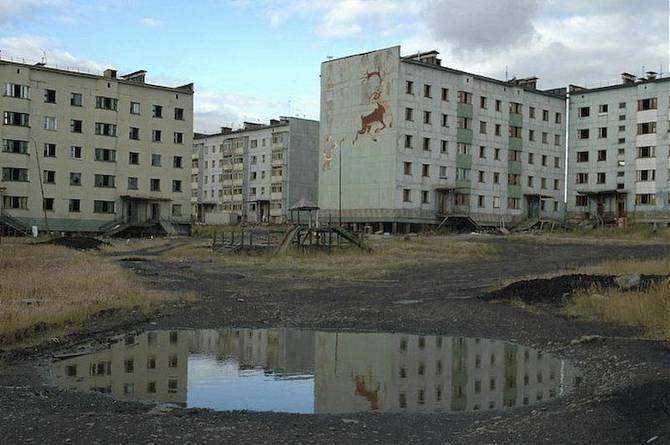






Centralia, United States
Centralia is a ghost town in Pennsylvania in the United States. Its population has dwindled from over 1,000 residents in 1981 to only 4 today.
How did it become one of the world’s most famous abandoned places? A mine fire has been burning beneath the borough since 1962 – for well over half a century by now.
There are several theories how the fire started.
One of them asserts that in May 1962, Centralia Borough Council decided to clean up the town landfill. For this, they hired five members of the volunteer fire brigade.The firefighters followed a then-standard procedure. They set the dump on fire, intending to let it burn down the trash for a time. However, the team was unable to extinguish the fire after it served its purpose.
The fire kept burning, reaching lower levels of the dump. It might eventually have gone out on its own, but then misfortune struck. The burn spread through a hole in the rock pit into the abandoned coal mines beneath Centralia. Over the years, all attempts to control the fire failed. It simply continued to burn throughout the 1960s and 1970s.
Several people began reporting adverse health effects. These were due to the byproducts of the fire: Carbon monoxide, carbon dioxide, and unwholesomely low oxygen levels.
In 1984, Congress allocated more than $42 million for relocation efforts. Most of the residents accepted the buyout offers. But a few families opted to stay despite warnings from state officials. In 2013, a new agreement allowed the remaining population of 7 to live out their lives in Centralia. Only 4 of them were left as of 2021.






Kowloon Walled City, Hong Kong, China
Kowloon used to be one of the areas of Hong Kong city. In the late 1970s, the Walled City began to grow rapidly. Square buildings folded up into one another, owing to thousands of modifications. Virtually no architects or engineers oversaw this building frenzy.
Labyrinthine corridors ran through the city, often clogged with refuse. Some ran along former streets, others through upper floors and between buildings. Sunlight rarely reached the lower levels.
There were only two rules for construction. The first was that electricity had to be provided, so that people would not need to start cooking fires. The second rule was that buildings could be no higher than fourteen stories, because of the nearby airport.
By the early 1960s, Kowloon Walled City had an estimated population of 35,000. The City was notorious for its excess of brothels, casinos, opium dens, cocaine parlors, food courts serving dog meat, and secret factories.
In 1987, officials announced a decision to demolish the Walled City and resettle its inhabitants. At that time, it had 50,000 inhabitants on 26,000 sq. meters (31,000 sq. yards). Its population density was therefore extreme, at 1,923,077 per sq. km. This made it one of the planet’s most densely populated urban areas.
Kowloon Walled City demonstrates that not all abandoned places in the world stay just as people left it. After the demolition in 1992-1993, a park arose in its place, with construction starting in May 1994. Today, the Kowloon Walled City Park has taken its place.





Oradour-sur-Glane, France
Oradour-sur-Glan is a town in west-central France. It has one of the saddest histories of abandoned places in the world. The original village was destroyed on June 10, 1944. On this day, a German Waffen-SS company murdered 643 of its inhabitants. A new village was built after the war on a nearby site. The ruins of the old Oradour-sur-Glan are being maintained as a memorial, as is the cemetary. The site has a highly-rated museum.







Kolmanskop, Namibia
Kolmanskop is a ghost town in southern Namibia. It used to be a small mining village. Today, it is a popular tourist destination. The joint firm NAMDEB (Namibia-De Beers) offers travel services for the place.
The village of Kolmanskop developed after the discovery of diamonds in the area in 1908. The constructions sheltered mine workers from the harsh environment of the Namib Desert. The village had a layout similar to a German town, and had generous facilities. These included a hospital, ballroom, power station, school, skittle-alley, theater and sport-hall, casino, and an ice factory. The town also hosted the first X-ray station in the southern hemisphere.
The town declined after World War I as diamond prices crashed. Most operations moved from Kolmanskop to Oranjemund. As a result, the last inhabitants left it in 1956. Since then, restorations recovered part of the town. Owing to the geological forces of the desert, tourists can now walk through houses knee-deep in sand.







Humberstone, Chile
In 1872, the Guillermo Wendell Nitrate Extraction Company founded the saltpeter works of Santa Laura. In the same year, The Peru Nitrate Company started extracting saltpeter nearby, at La Palma. Both works grew quickly from their beginnings. As a result, they rapidly become busy towns characterized by lovely buildings in the English style.
The economic model collapsed during the Great Depression of 1929 because of the development of the synthesis of ammonia, which led to the industrial production of fertilizers. The saltpeter companies abandoned the works in 1960 and in 1970, respectively. As a result, the settlements there became ghost towns. The government later declared them national monuments and opened them to tourism. In 2005, UNESCO designated them a World Heritage Site.


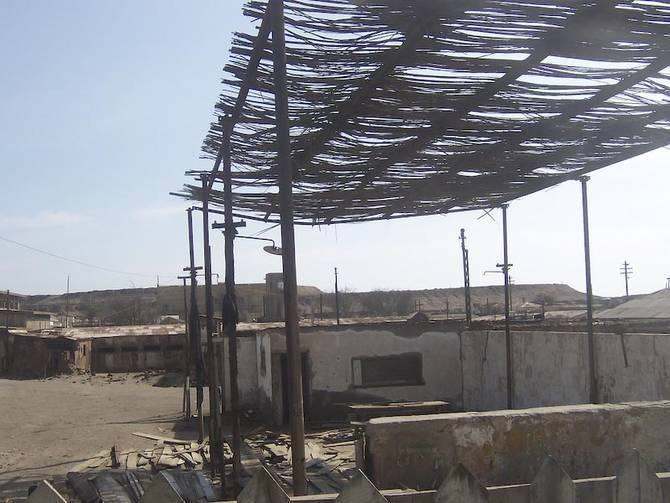


Wittenoom, Australia
Wittenoom is a locality in the Pilbara region of Western Australia. During the 1950s, Wittenoom was the Pilbara’s biggest town. In 1966, however, health concerns from asbestos mining at the nearby Wittenoom Gorge arose. As a result, officials shut down the town. Official maps have not included its name or location since 2007.
Today, Wittenoom is a ghost town with a single resident, who works as a weatherman for Perth Airport. In 2015, the government decided to evict all others. If you try to drive towards contaminated areas now, you will encounter roadblocks. Several roads were outright demolished.

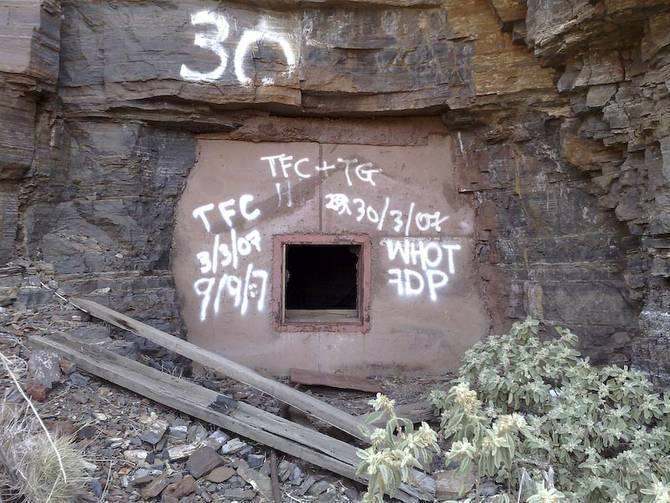



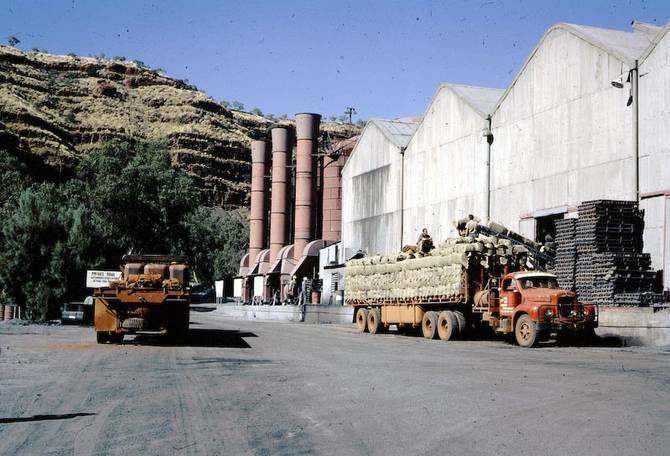

Agdam, Azerbaijan
Agdam suffered total destruction in 1993 in the first Nagorno-Karabakh War with neighboring Armenia. In the years since, people from surrounding villages have taken building material from its ruins. Before the war, the city’s population stood at about 30,000 residents.






Varosha, Cyprus
In the early 1970s, the city of Famagusta was the number one tourist destination in Cyprus. To cater to the increasing number of tourists, the city constructed many new high-rise buildings and hotels.
During its heyday, the Varosha quarter of Famagusta was not only the number one tourist destination in Cyprus, but between 1970 and 1974 it was one of the most popular tourist destinations in the world. In particular, it was a favorite destination of wealthy, rich and famous stars such as Elizabeth Taylor, Richard Burton, Raquel Welch and Brigitte Bardot.
During the Turkish Invasion of Cyprus in 1974, the population was evacuated out of fear of lethal fighting and massacres. Fences and landmine belts now seperate the area, which remains under Turkish Cypriot control, from the Greek-controlled part of the island.
For most of the 45 years since, the entire area of Varosha was a ghost town. In late 2020, small areas – notably the beach – were again opened to the public. Under Greek and UN protest, Turkish developers have begun work on some plots recently, but the majority remains half-reclaimed by nature.

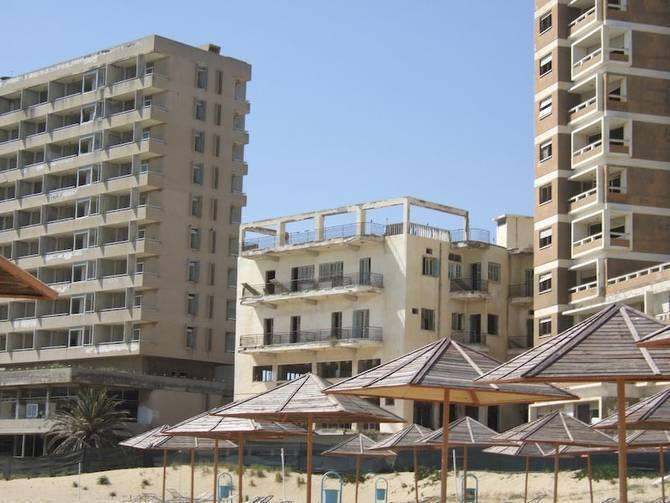


Balestrino, Italy
Balestrino dates back to the Middle Ages – yet despite its long history, the forces of nature eventually drove its residents to abandon it. Some of the earliest reliable information about the village is from 1860. At this time, its population was about 850 inhabitants. At the end of the 20th century the village suffered from several earthquakes after which the residents left. Many have, however, rebuilt at a nearby site.



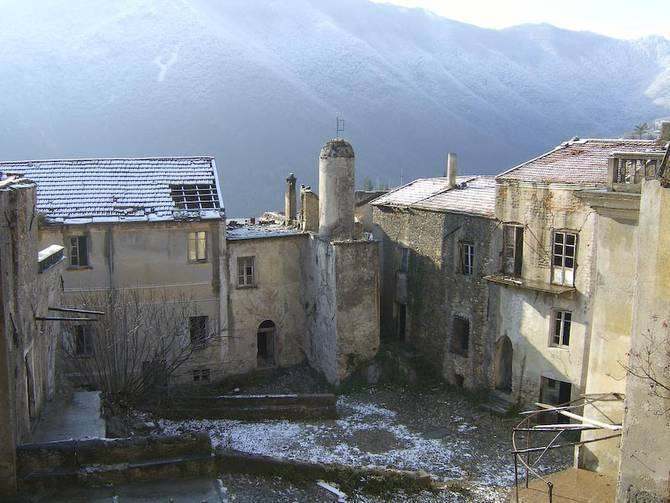



Craco, Italy
This village has the same history as the Balestrino, and its inhabitants suffered the same fate. Because of earthquakes, people had to leave looking for safer places.




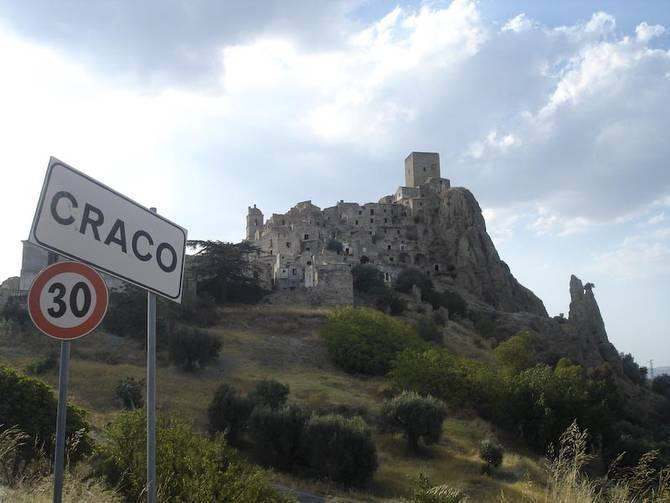
Bodie State Park, California, Unites States
Bodie is a ghost town in California in the United States.
Today, it is a National Historic Landmark and a State Park. In 1859, though, the settlement began as a mining camp. That year, miners discovered gold in the region. As a consequence, countless hopefuls packed their bags and set out to make their fortune. In the process, they built Bodie.
The mining camp developed into a fully-fledged Wild West boomtown. But that growth was not sustainable. Most of the gold deposits were soon exhausted, though, and the local economy began to collapse. Little by little, the population moved away, leaving behind their homes, cars, and mining equipment.
Bodie is yet another proof for the old sentiment of “no gold, no people.” An exhaustion of natural resources has resulted in many abandoned places in the world.




The Paris Catacombs, France
Sometimes, abandoned places are tucked away in the midst of population centers. This is the case with the Paris Catacombs, hidden beneath the streets of the French capital.
Built in the 18th century, the sprawling catacombs form a labyrinth of tunnels and caverns. Its intended purpose was to serve as a gigantic tomb.
At the time, above-ground graveyards posed a serious public health threat. That’s why the authorities decided to transfer the remains of the city’s dead to the abandoned quarries beneath its surface. Centuries earlier, they had supplied the stones used to construct Paris. Now, they became home to its dead.
In 1785, workers began to empty bones from the tombs, common graves, and charnel houses at Saints-Innocents cemetery. Saints-Innocents had been closed five years before, nearly a thousand years after its first burials. The bones were moved at night, to avoid opposition from the citizens and the Catholic Church.
The efforts were eventually abandoned in the 1860s. However, according to estimates, the bones of 6 million bodies now lie buried in the catacombs. Their stacked remains still line the deserted tunnels, forever plunged into darkness.
Since 1874, parts of the catacombs have been open to the public. Today, these areas are managed by the Paris museums.




The SS Ayrfield, Australia
Built in the United Kingdom in 1911, the SS Ayrfield served as a steam-collier for a six decades. The ship transported coal, oil, and supplies during during World War II. But after being decommissioned in 1972, it became abandoned in Homebush Bay near Sydney, Australia.
For a few decades, the bay was used for various ship-breaking operations and commercial trading. However, these activities petered out in the 70s, leaving behind nothing but toxic waste and abandoned ships. Today, countless wrecked hulls still litter the water of what is now often called Shipwreck Bay. The SS Ayrfield is the most prominent among them.
Today, nature has reclaimed what is left of the wreck. Trees are leading a successful mutiny on the rusting ship’s deck.


Campanile di Curon, Italy
For centuries, the small town of Curon Venosta lay nestled in a valley in the Italian Alps. Today, only the bell tower of this abandoned settlement remains, protruding from the waters of an artificial lake.
After World War II, authorities decided to merge three smaller existing lakes for hydropower purposes in the Trentino region of Northern Italy. The ancient town of Curon Venosta had to go.
Much of the town was rebuilt on higher ground on a nearby hill. The bell tower of the local church, built 700 years before, remained. To this day, it stands as a lone reminder of the town that once was.
In winter, the lake usually freezes over. During this time, visitors can walk up to the tower and explore it. According to local legend, some nights the tower’s bells still ring out over the lake – even though they were removed before the town was flooded.


The Great Train Graveyard, Bolivia
The Bolivian region of Uyuni is famous amongst travellers for the salt flats and red lakes that stretch into the distance.
A more creepy, yet awe-inspiring tourist attraction, though, is its cemetary of abandoned trains. High up on these Andean plains, dozens of steel locomotives are slowly fading away.
Back in the 19th century, local officials were planning to enlarge the region’s transportation network – especially by extending the rail system. However, they abandoned the project because of technical issues, and conflicts with Uyuni’s indigenous population.
For some time, the trains that had been bought were used to transport minerals and other products to ports along the Pacific coast. This use ended in the 1940s, though. As miners moved away and companies shut their offices, equipment was left to corrode away in the desert.
Most of the trains to be found in this graveyard were imported from Britain in the early 1900s. Overall, there are over 100 antique cars left to the salty winds. Tourists face no restrictions when visiting the site, and many climb atop the trains or climb inside the skeletons of these once mighty steel giants.


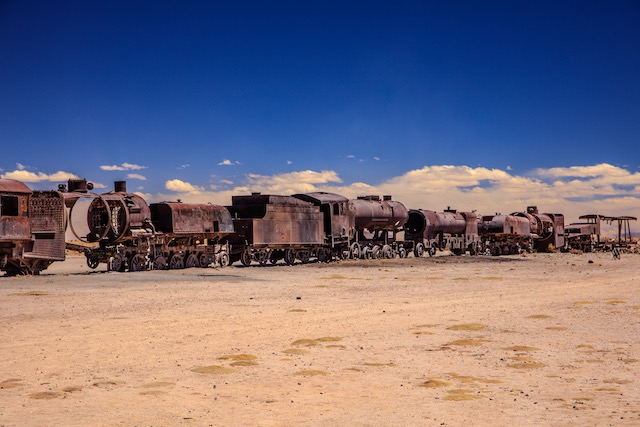
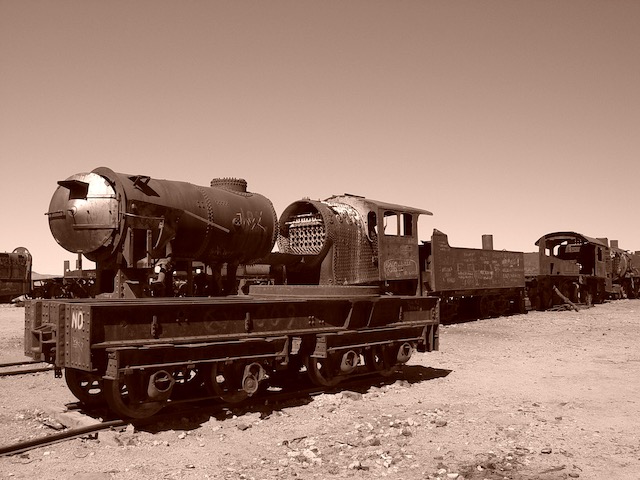
Klein Curaçao, Curaçao
Klein Curaçao is a tiny, abandoned island in the Dutch Caribbean, covering just over half a square mile.
The island lies about 6 miles south-east of the main island of Curaçao. Though just off the coast of Venezuela, both belong to the Kingdom of the Netherlands.
Klein Curaçao is a coral island – there is no drinking water. Phosphate mining lowered the elevation of the island and contributed to desertification, leading to its abandonment.
At its center remains an old lighthouse. There are ruins of fishermen’s huts and other buildings, as well as shipwrecks on its western side.
Besides the fascination of abandoned places, Klein Curaçao offers stunning natural beauty. Several species of turtle nest on the island’s beaches. Seasonally, there are large numbers of migratory shorebirds. Plus, you can explore underwater coral and caves.


Hirta, St Kilda Archipelago, Scotland
Hirta is the main island of the St Kilda archipelago in the North Atlantic, 40 miles west of the Outer Hebrides in Scotland. It’s also the only one that was permanently settled – formerly.
Geologically, the St Kilda islands form the rim of an extinct volcano. Hirta features lush green hills, puffin colonies, and rare breeds of sheep, such as the Soay sheep (a surviving Neolithic breed) and Boreray sheep (the UK’s rarest breed).
Settlements on the island date back thousands of years. Archaeologists dated some of the artifacts on the island all the way back to 3850 BC. One of the mountains on the island also contains a Bronze Age quarry.
People lived off sheep farming, tweed production, fishery and hunting puffins for millennia. Yet the island was abandoned in 1930.
They left the island after many young men died in World War One, and many others emigrated to Australia. After a woman had died of appendicitis and pneumonia, which she might well have survived on the mainland, the remaining villagers asked the UK government to transfer them to the mainland.
When leaving their cottages, every islander left a plate of oats and an open Bible on their table before boarding the ship.
Note: This post was originally compiled in 2009 and has since been updated repeatedly with additional background information, new statistics, and relevant links.













